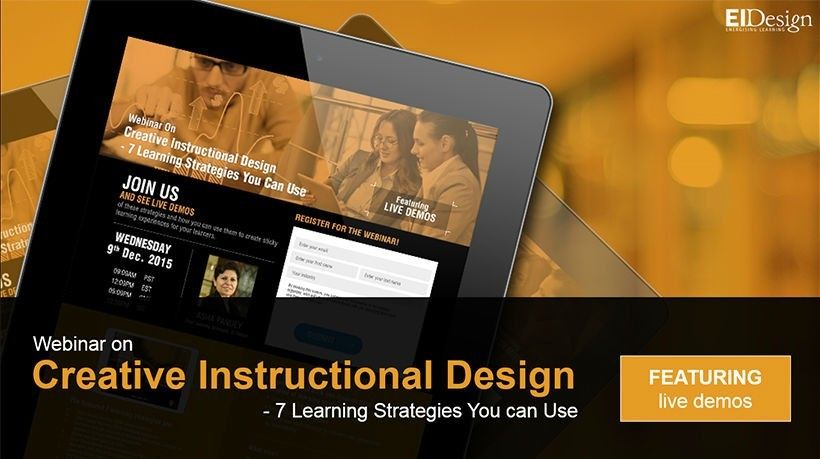Optimizing ROI In Higher Ed Instructional Design
In higher education, Instructional Design is essential to ensuring that students learn effectively and efficiently. However, the Instructional Design process should focus on more than just creating materials but also aligning those materials with the institutional needs. This article will explore the importance of aligning Instructional Design with institutional needs, explicitly focusing on Return On Investment (ROI). It will also highlight the considerations that should be made during the planning and the Instructional Design process and which stakeholders from the institution should be involved.
Why Is Aligning Instructional Design With Institutional Needs Important?
Instructional Design should align with the institutional needs because it ensures that the educational materials produced meet the institution's goals and objectives. When Instructional Design is aligned with institutional needs, it can lead to the creation of irrelevant materials that do not meet the goals of the institution. This can result in wasted resources, time, and money. Additionally, aligning Instructional Design with institutional needs ensures that the educational materials produced are relevant and valuable to the target audience, resulting in better learning outcomes.
ROI And Instructional Design
ROI is an essential consideration in Instructional Design. The term ROI refers to the Return On Investment, which measures the educational materials' effectiveness. When Instructional Design is aligned with institutional needs, it ensures that the educational materials produced are effective, which leads to a positive ROI. A positive ROI means that the educational materials produced have contributed to achieving the institution's goals and objectives.
Considerations During The Planning Process
The planning process is the first step in Instructional Design, and it is essential to consider the following when aligning Instructional Design with institutional needs:
- Goals and objectives
Identify the institution's goals and objectives. This will ensure the educational materials are relevant and useful to the target audience. - Target audience
Identify the target audience for the educational materials. This will help ensure the materials are designed to meet the target audience's needs. - Resources
Identify the resources available for the Instructional Design process. This will help ensure that the materials produced are within budget and can be completed promptly. - Stakeholders
Identify the stakeholders involved in the Instructional Design process. This will help to ensure that all perspectives are considered during the process.
Considerations During The Instructional Design Process
The Instructional Design process is where the educational materials are created. During this process, the following should be considered:
- Learning objectives
Ensure that the learning objectives are aligned with the institution's goals and objectives. This will help to ensure that the materials produced are relevant and useful to the target audience. - Instructional strategies
Identify the instructional strategies that will be used to deliver the educational materials. This will help ensure the materials are designed to meet the target audience's needs. - Assessment
Identify the assessment strategies that will be used to measure the effectiveness of the educational materials. This will help to ensure that the materials produced have a positive ROI. - Review
Ensure stakeholders review the educational materials to meet the institution's goals and objectives. This will help to ensure that the materials produced are relevant and useful to the target audience.
Stakeholders Involved In The Instructional Design Process
When aligning Instructional Design with institutional needs, it is vital to involve the following stakeholders:
- Subject Matter Experts
Subject Matter Experts are essential in Instructional Design because they have the knowledge and expertise needed to create effective educational materials. - Faculty
Faculty are essential stakeholders because they will deliver the educational materials to the target audience. Involving faculty in the Instructional Design process will ensure that they understand the goals and objectives of the materials and can effectively deliver them to students. - Students
Students are the target audience for the educational materials, so involving them in the Instructional Design process can ensure that the materials meet their needs and effectively achieve the desired learning outcomes. - Administrators
Administrators can provide valuable input during the Instructional Design process because they understand the institution's goals and objectives.
Conclusion
Aligning Instructional Design with institutional needs is essential to ensuring that the educational materials produced are effective, relevant, and useful to the target audience. ROI is essential in Instructional Design because it measures the effectiveness of educational materials. During the planning process, it is important to consider the goals and objectives, target audience, resources, and stakeholders involved in the Instructional Design process.
It is also important to consider the learning objectives, instructional strategies, assessment, and review of the materials produced. Finally, involving Subject Matter Experts, faculty, students, and administrators in the Instructional Design process can ensure that the materials produced meet the institution's goals and objectives. By aligning Instructional Design with institutional needs, educational materials can be produced with a positive ROI, resulting in better student learning outcomes and achieving the institution's goals and objectives.









